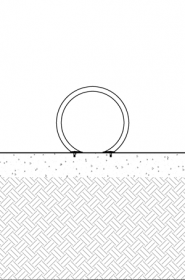Installing Bike Racks with Flanged Surface Mountings
Flanged mountings allow Reliance Foundry’s commercial bike racks to be easily installed in existing concrete surfaces. The fixed mountings provide secure bicycle storage, and create architectural perimeters. Bike racks are available in standard powder coating and stainless steel finishes to complement various building and landscape designs. It is important to note that with this installation method, bike racks will provide limited impact resistance.
Be aware that the parts and installation equipment required for this method will differ depending on the bike rack model. Please refer to the product drawing for each specific model to determine measurements.
PARTS LIST
|
# |
PART |
QTY |
|---|---|---|
|
1 |
Bike Rack |
1 |
|
2 |
Drop-In Concrete Insert (refer to specific product drawing for sizes) |
Varies |
|
3 |
Washer (refer to specific product drawing for sizes) |
Varies |
|
4 |
Hex Head Bolt (refer to specific product drawing for sizes) |
Varies |
INSTALLATION EQUIPMENT
|
Broom/Pressure Washer |
|
|
Chalk |
Level |
|
Vacuum |
Hammer |
|
Measuring Tape |
|
|
Hex Key (refer to specific product drawing for tool sizes) |
|
|
Masonry Drill Bit (refer to specific product drawing for tool sizes) |
|
|
Insert Setting Tool (refer to specific product drawing for tool sizes) |
|
|
Wrench (refer to specific product drawing for tool sizes) |
|
|
Hammer Drill or Rotary Hammer |
|
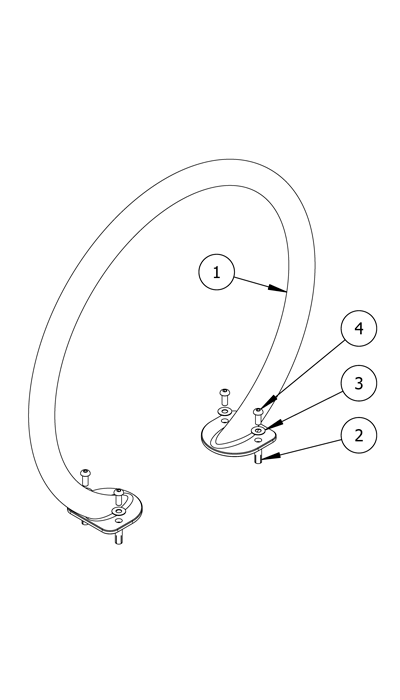
NOTE
- To protect the finish, keep bike racks in original packaging until the exact moment of installation.
- Handle with care to avoid scratching or damaging bike rack surfaces as abrasions will lead to rust.
- Once scratched, bike racks cannot be repaired to original form without re-finishing the entire surface.
Before installation
Check for hazards
Always check for hazards such as water pipes, gas lines, and underground wiring before drilling.
Clean the surface
Dirt and debris can affect the line of sight and disrupt placement of the bike racks.
Use a broom or pressure washer to clean the concrete surface prior to bike rack installation.
Study the site plans
Site plans are generally created by the architect of the project.
Refer to site plans to locate and mark precise center points of the bike rack’s flanges.
For secure installation, ensure there is a minimum radius(1) of solid concrete around each mark.
Designate your hole marking
Keep the bike rack in its protective packaging. Place the bike rack’s flanges over each center point marking.
Use chalk to create drill-markings for each bolt.
Remove the bike rack.
Note: Be sure to make any necessary adjustments to the orientation now. Once drilled and installed, there is no way to move the bike rack.
Drill the holes
Create pilot holes
Tap pilot divot holes in the center of each mark.
This will prevent the hammer drill or rotary hammer from drifting while boring the holes.
Set the depth control on the hammer drill (or rotary hammer)
Depth control settings will differ based on the bike rack model. Refer to product drawing to determine the specific depth control settings.
Drill the holes
Drill holes to the required diameter and depth based on the bike rack model. Refer to product drawings to determine specific measurements.
Drill on high speed, using the hammer function if available.
Check the masonry bit often to ensure it remains debris-free.
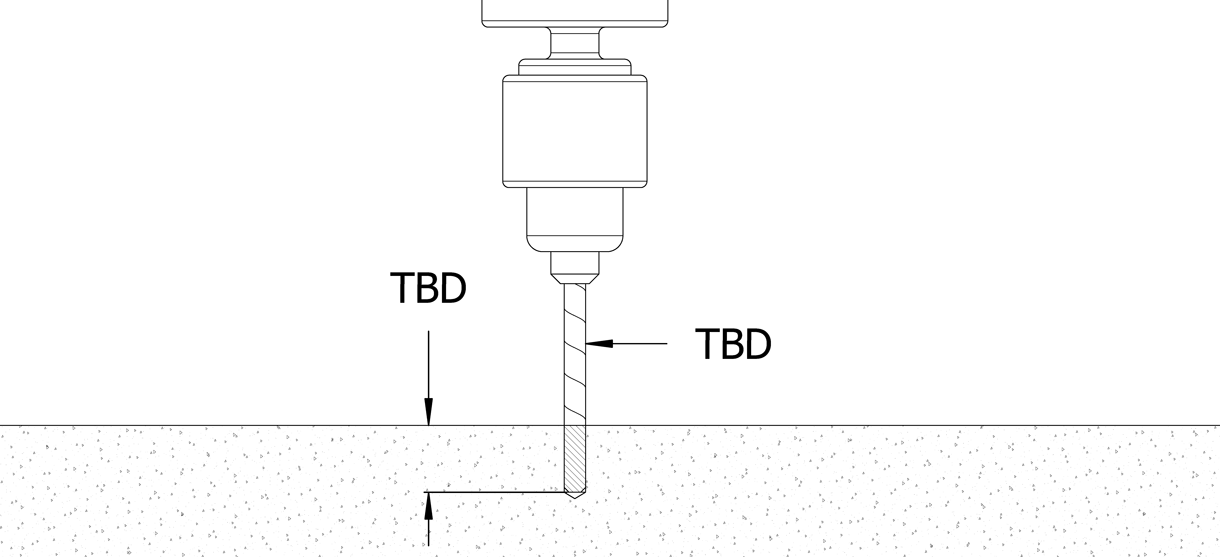
Secure the bike rack
Clear and clean the holes
Clear the holes of all debris and/or standing water using the vacuum.
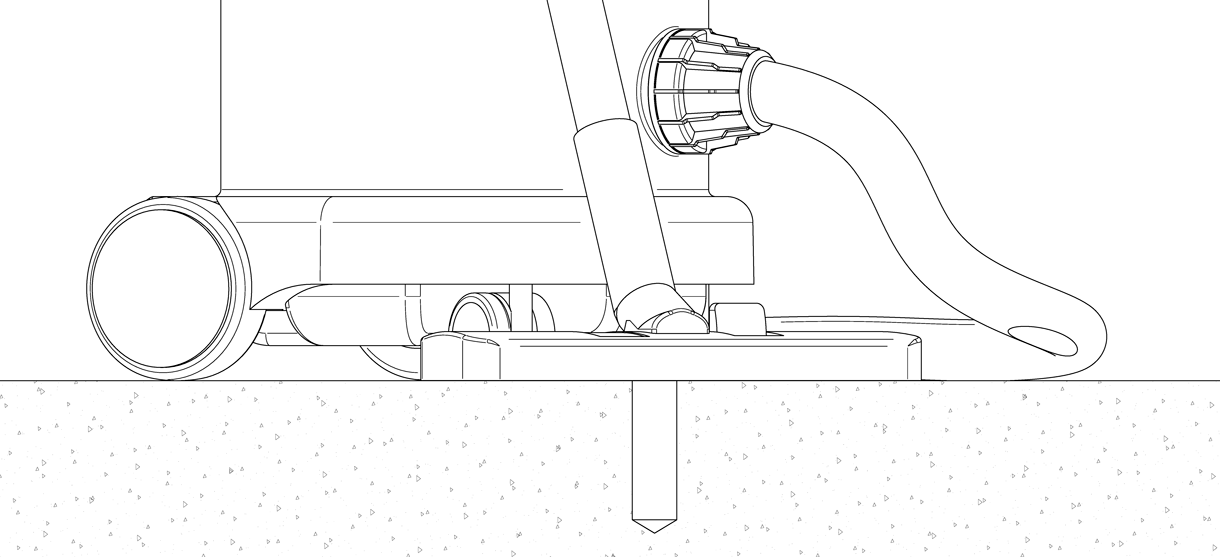
Tap the drop-in insert into each hole
With the slotted end facing down, drive the drop-in insert (A) down until the top of the drop-in insert sits flush with the surface of the concrete.
Set the concrete insert
Insert a setting tool (B) into each hole, then hammer down.
If a proper setting tool is not available, an equivalent flat-end punch can be used.
This will cause the internal expansion plug to set the concrete insert in place.
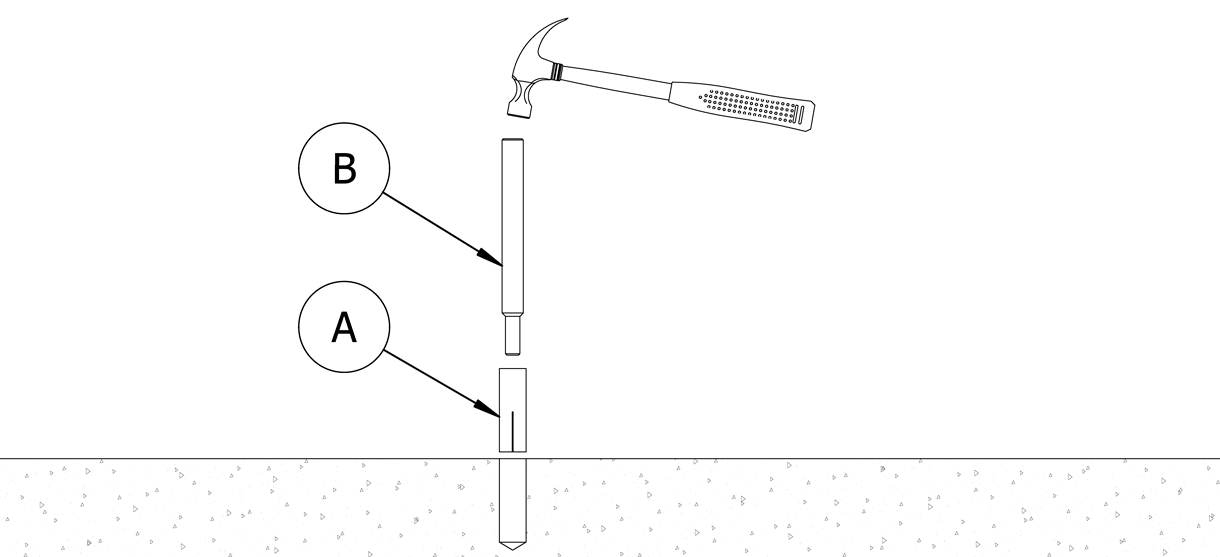
Set the bike rack over the holes
Keep the bike rack in its protective packaging. Carefully set the bike rack’s flanges over the installation position so that the flanges’ bolt holes are directly on top of the drilled holes and concrete inserts.
When ready to install, remove the protective packaging.
Secure the bike rack
Place the washers over the holes on the bike rack’s flanges and set the bolts into place.
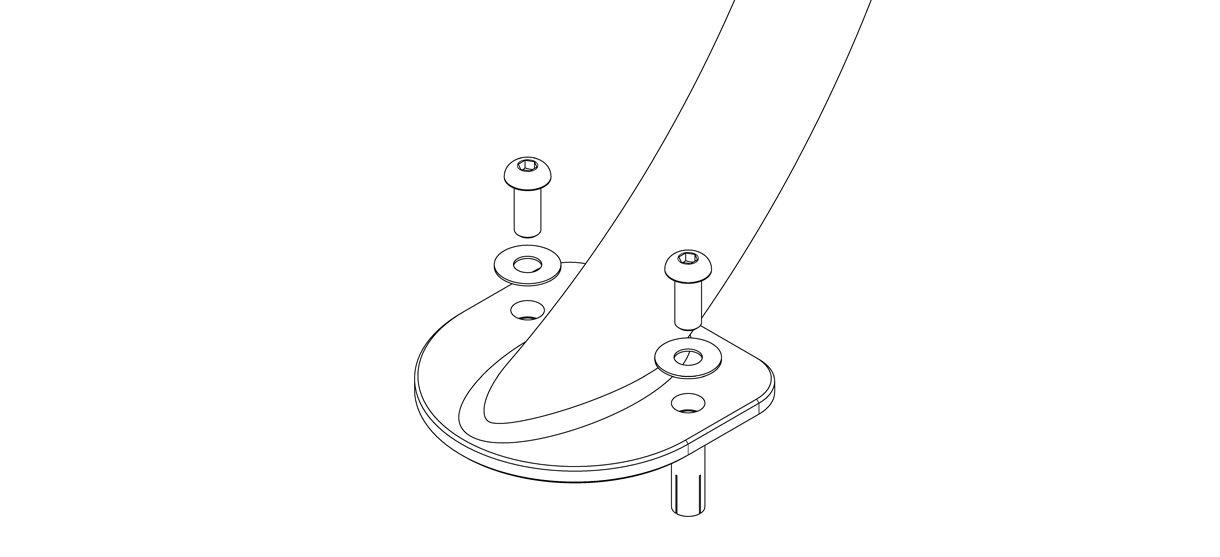
Use a hex key to tighten the bolts until secure. Tighten bolts evenly in a cycle.

Inspect
Inspect the installation
From a distance, examine the plane of view.
Ensure the bike rack is plumb to the surface, and the surface is flat.
Check the bike rack for any signs of surface damage
Abrasions should be covered as soon as possible to prevent rust and ensure the proper life of the bike rack. For damage repair or other servicing needs, please contact Reliance Foundry’s sales department.
Care and maintenance
Reliance Foundry manufactures its products to the highest design standards to ensure their durability. Reliance’s bike racks are finished with long-lasting powder-coating. In most North American environments, routine inspections and cleaning will ensure that bike racks retain their aesthetic appeal. Proper care and maintenance are required to maintain the finish and ensure a full service life.
1. Concrete insert manufacturers such as www.ucanfast.com recommend specific measurements for minimum radii.
